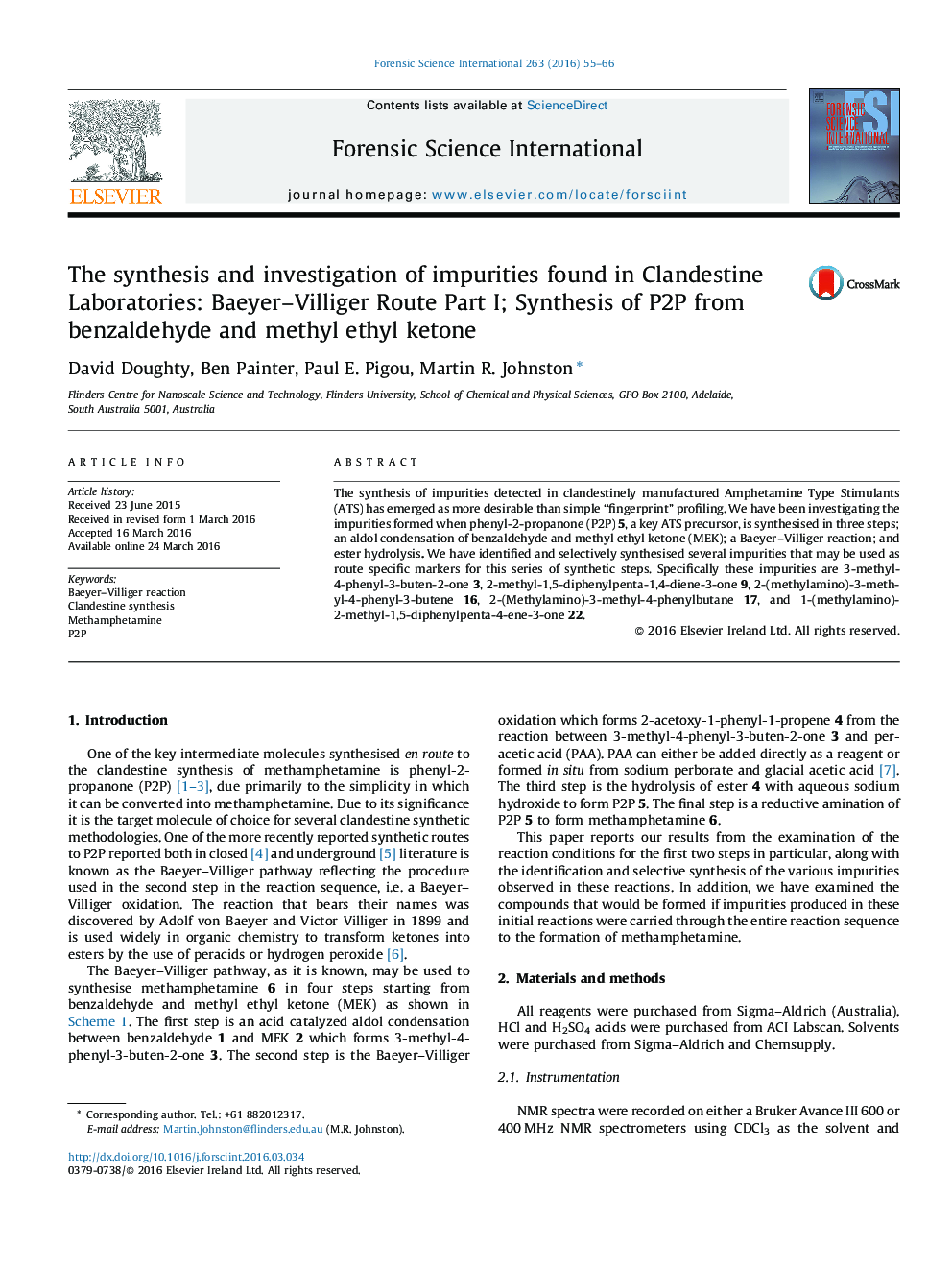| Article ID | Journal | Published Year | Pages | File Type |
|---|---|---|---|---|
| 95138 | Forensic Science International | 2016 | 12 Pages |
•Benzaldehyde and methyl ethyl ketone can be converted into methamphetamine in four steps.•Baeyer–Villiger reaction is key in the production of P2P.•Potential route specific impurities have been identified, independently synthesised and characterised.
The synthesis of impurities detected in clandestinely manufactured Amphetamine Type Stimulants (ATS) has emerged as more desirable than simple “fingerprint” profiling. We have been investigating the impurities formed when phenyl-2-propanone (P2P) 5, a key ATS precursor, is synthesised in three steps; an aldol condensation of benzaldehyde and methyl ethyl ketone (MEK); a Baeyer–Villiger reaction; and ester hydrolysis. We have identified and selectively synthesised several impurities that may be used as route specific markers for this series of synthetic steps. Specifically these impurities are 3-methyl-4-phenyl-3-buten-2-one 3, 2-methyl-1,5-diphenylpenta-1,4-diene-3-one 9, 2-(methylamino)-3-methyl-4-phenyl-3-butene 16, 2-(Methylamino)-3-methyl-4-phenylbutane 17, and 1-(methylamino)-2-methyl-1,5-diphenylpenta-4-ene-3-one 22.
Graphical abstractFigure optionsDownload full-size imageDownload high-quality image (156 K)Download as PowerPoint slide
